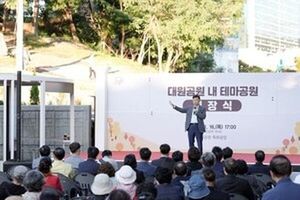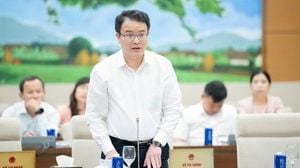The Korea Employment Information Service released concerning predictions on March 17, 2025, forecasting significant declines in the number of economically active individuals aged 15 or older starting from 2030. This analysis indicates troubling trends for South Korea's labor market alongside expected demographic shifts.
According to the report, the number of economically active people is expected to increase by only 248,000 from 2023 to 2033. This figure starkly contrasts the 3.095 million increase seen from 2013 to 2023, highlighting the challenge posed by the forthcoming demographic and economic shifts.
The anticipated changes signal troubling trends for future employment. The number of employed individuals is projected to climb by 397,000 by 2028, but this will be followed by declines of approximately 85,000 by 2033. Overall, this results in only a 312,000 increase by 2033, which is just one-tenth of the previous decade's growth of 3,117,000 jobs.
Industries such as social welfare and health are expected to see the most significant increases. The report predicts these sectors will add around 760,000 positions over the next decade, spurred by higher demands associated with aging populations and increased health care services. The publishing industry and tech fields may also see job growth driven by innovations and digital transformations.
Conversely, the retail sector is set to suffer greatly, with expectations of losing around 264,000 jobs due to industrial changes such as onlineization and platforming. The shift to digital and online platforms is reshaping consumer habits and dramatically impacting traditional job markets.
The demographic forecast shows concerning trends with the labor market, where the proportion of elderly individuals aged 65 and older is projected to surpass 30% of the population aged 15 or older by 2033. This demographic shift is expected to exacerbate labor shortages, as the economy may face the dual problems of fewer available workers and increased competition for care roles.
To meet its long-term economic growth forecast of 1.9 percent, the Korea Employment Information Service emphasizes the need for additional workers by 2033. The growth movements inferred suggest the need for careful workforce planning to balance both high-skilled jobs, particularly within health and technology sectors, and also lower-skilled positions.
The Employment Information Service outlined necessity for targeted policies to address the challenges of declining labor participation. An official commented, "The first task is to expand labor market participation by providing incentives to women, young people, and elderly people with low participation in economic activities. Policies should also be prepared to compensate for the shortage of labor by increasing productivity in a timely response to technological changes." This highlights the proactive role needed from policymakers to stimulate workforce growth and adaptation to changing job demands within South Korea.
Stacked against demographic changes and technological advancements, the labor issues at hand necessitate urgency. Authorities are encouraged to develop bespoke strategies to attract diverse groups, such as the youth, women, and elderly, encouraging wider participation and addressing potential labor shortages head-on.
The anticipated shifts within South Korea's labor market demand not only awareness but also comprehensive action from both industry leaders and governmental entities. Without significant efforts to counteract these trends, the looming labor and economic hurdles may restrict future growth.




